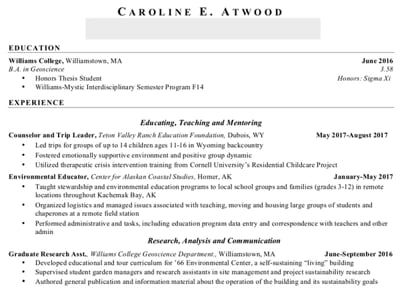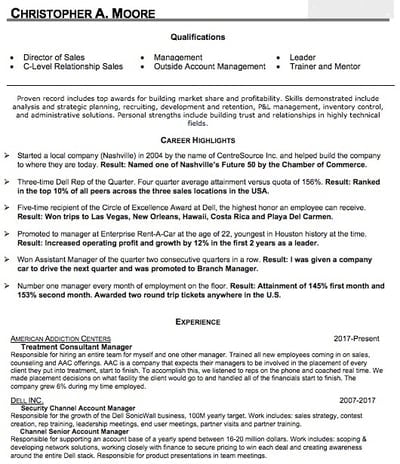Today something complex, advanced, that is most applicable to those who are at the edges of spending money, and thus have an intricate web of internal and external teams to deliver customer engagement and business success.
The Marketing Industrial Empire is made up of number of components.
If you consider the largest pieces, there is the internal (you, the company) and the external (agencies, consultants).
If you consider entities, you’ve got your media agency, your creative agency, your various advertising agencies, your website and retail store teams, your analysts, marketers, advertising experts, the UX teams, campaign analysts, fulfillment folks, the data analysts who are scattered throughout the aforementioned entities, the CMO, CFO, and hopefully your CEO. And I'm only talking about the small portion of your existence that is your marketing and analytics.
Whether you consider the large, simplistic perspective (internal – external) or the more complex entity view, it’s really easy to see how things can become siloed very quickly.
It’s so easy for each little piece (you!) to solve for your little piece and optimize for a local maxima. You win (bonus/promotion/award). It is rare that your company wins in these siloed existence.
That’s simply because silos don’t promote consideration of all the variables at play for the business. They don’t result in taking the entire business strategy or the complete customer journey. Mining a cubic zirconia is celebrated as if it is a diamond.
Heartbreakingly, this is very common at large and extra-large sized companies. (This happens a lot less at small companies because of how easily death comes with a local maxima focus.)
So how can you avoid this? How do you encourage broader, more out-of-the-box thinking?
This might seem simplistic, but sometimes it helps to give things names. Naming things clarifies, frames, and when done well it exposes the gaps in our thinking.
Today, I want to name two of the most common silos in large and extra-large companies, in the hope that it’ll force you to see them and subsequently abandon siloed thinking and solve for a global maxima.
Name abstract ideas, draw pictures, deepen appreciation, take action.
Could not be simpler, right? :)
Let’s go!
The Advertising Ecosystem: Passive Consumption.
I'm randomly going to use Geico as an illustrative example because the frequency at which they are buying ads means that every human, animal, and potted plant in the United States has seen a Geico commercial at least once in the last 6 hours (contributing to Geico’s business success).
Typically the ads we see are the result of the external creative and media agencies, and their partners in the internal company team/s.
Geico purchases every kind of ad: TV spots, radio ads, billboards (OOH), digital displays (video, online,– social media), print (magazines, newspaper, your cousin's Christmas letter), and so much more.
The teams naturally gravitate towards optimization and measurement that spans their individual mini-universes.
Was that a great ad? Can we test different spending levels in that market? What is the best way to get people to remember the delightful gecko? Can we automate the placement of display ads based on desired psychographics?
Did we get the TRPs that we were shooting for? What was the change in awareness and consideration? What was the reach/frequency for the Washington Post? How many impressions did our Twitter ads get, and how many people were exposed to our billboards?
These are important questions facets of, and delivery optimization of, the advertising. Questions like these, and adjacent others, tend to drive the entire lives of creative and media agencies/teams. For entirely understandable reasons. Siloed incentives delivering siloed local maxima results.
I cannot stress enough that these results can be positive (for the ad business and, in this case, the sales of insurance products). And yet, as a global maxima person it does not take a whole lot of effort to see a whole lot of opportunity if both the siloed incentives can siloed execution implied by the above questions can be changed.
Here’s an incredible simple way that every human seeking global maxima can look beyond the silo: “So, what happens after?”
As in, what happens after the finite confines that are the scope of my responsibility/view?
To see that, the first step is to paint a picture that illustrates the current purpose (your silo), and then give it a name.
Here’s that picture for the example we are using, and the name I gave it is “passive consumption.”

Over 90% of advertising is passive consumption. This means that the ad is in front of the human and they may see it or not see it.
Even on the platforms where interactivity is at its very core (Instagram, Facebook, YouTube, etc.), almost all of the advertising does not elicit any sort of interactivity. If you look at the percentages, almost no one clicks on banner ads, a small percentage on search ads, and you need only speak with a few people around you to see how many people actively engage with TV ads vs. run to the bathroom or pull out their mobile phone the moment forced-watch TV ads come on.
Keep in mind, this is not a ding against passive consumption or the hard work done by Geico's agency and internal teams. Blasting ads on TV does cause a teeny tiny micro percentage to buy insurance – a fact provable via Matched Market Tests, Media Mix Models. The teeny tiny micro infinitesimally small number of views of brand display ads will cause outcomes. (Hold this thought, we’ll come back to that in a moment.)
So, what is the passive consumption challenge?
First, how far the vision of the creative and media agencies/teams will see (thus limiting success – global maxima). Second, trapped in the silo the vision for what will be measured and deemed as success.
The first is heartbreaking. The second ensures the death of any long-term impact.
Let me explain.
With over 90% passive consumption…. Well, passive… Smart media and advertising agencies/teams will primarily use post-exposure surveys to measure awareness (what companies provide car insurance) and consideration (which brands you would consider).
The brilliant agencies will also measure elements such as purchase intent (how likely it is that you'll consider Geico as your next car insurance provider) and likelihood to recommend (how likely is it that you'll recommend Geico to your family and friends).
All of these metrics will cause surveys to be sent via various mediums to people who've seen the TV ads, the banners on Facebook, and the video ads on YouTube. And a subset of users who were not exposed to the ads. Usually, there is anywhere between a few hundred to a thousand survey responses that will end up providing a statistically significant sample.
The scores from these responses are presented in weekly, monthly, or quarterly meetings. Segmented by marketing activity, they are the end-all be-all justification for media spending. Snapchat increased aided awareness by +23%, let us spend more there. Or, billboards in Georgetown and Austin shifted purchase intent by +2%, we should triple our spend in Chicago.
Every measurement and optimization initiative is based on this cocktail of metrics. Thus delivering a positive, but local, maxima.
Even the next best innovation in media will be based on results from the same metrics cocktail. Thus delivering a little more positive, but still local, maxima.
Why not global maxima?
Because success is determined by, innovation is driven by, measurement that is self-reported feelings.
That name captures the actual thing that is being measured (feelings) by the metrics above, and where the data comes from (self-reported) after being exposed to our advertising.
This will help your company, your agencies, understand limits. Limits in terms of what’s happening (mostly, passive consumption) and what data we are looking at (all post-exposure and self-reported).
Limits in measurement that incentivize solving for a local maxima.
Let me repeat one more time. Passive consumption measured by self-reported feelings does drive some success – else Geico would not be the financial success it is. In the short-term some campaigns are trying to drive long-term brand influence or causing a shift in public opinion or simply to remind people your brand still exists as a choice. All good. Self-reported feelings are wonderful. Appreciate that even in those cases where you are not trying to drive short-term sales, if all you have are feelings converted into metrics… You are limiting imagination.
An obsession with just passive consumption by your agencies and internal teams delivers 18 points of success. I’m saying if you think global maxima, remove limits, you can do 88 points!
The Business Ecosystem: Active Engagement.
Getting those additional 70 points success requires breaking the self-imposed creative/media/advertising silo and caring about the human behavior if people lean-in instead of passive consumption – when they take an action (a click, a phone call, a store visit).
Time to draw another picture, and give this behavior a name.
I call it… drum roll please… Active Engagement!
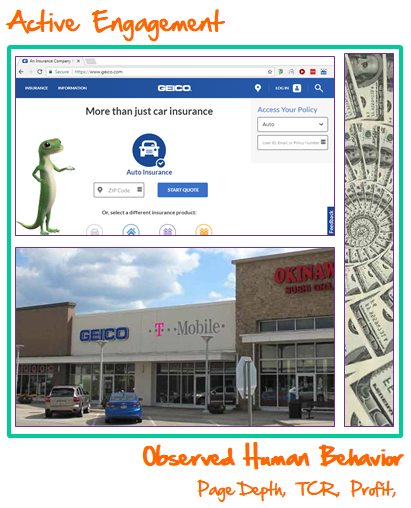
Some people, between 0.01% to 10% (so rare!), who see Geico’s online ads will visit a Geico retail store or Geico's website.
People are actually doing something. They are walking into your store, talking to an agent, picking up the literature, calling you on the phone, clicking on to your site, watching videos, comparison shopping, and more. This is all human behavior that your tools can report for you.
A small percentage will end up buying insurance – mazel tov! –, providing perhaps the most valuable data.
The lucky thing about active engagement is that, in addition to self-reported feelings, you also get tons of highly-useful quantitative data representing human behavior.
I call this type of data: Observed Human Behavior.
If you are a part of an creative, media, or an internal company team, you have two powerful issues you can solve for: passive consumption (happens most of the time) AND active engagement (happens some of the time).
Likewise, you can seek to understand performance using self-reported data where the people reflect on how they feel, along with behavior data that represents what they actually do.
The combination of these two factors deliver the much needed Global Maxima perspective.
That is how you shatter silos. The creative agency has to care about how ads perform in their labs, in the real world, and what kind of online and offline behavior the creative is driving (end-to-end baby!). The media agency has to care about the creative and where it needs to get delivered (recency, frequency FTW!), and the bounce rate (70% ouch, 30% hurray!) and profit from each campaign. The retail experience team, the call center delight team, and the site experience team will break their silo and reach back into understanding the self-reported feelings data from the media agencies and the ideas that lead to the creative that delivered a human to them.
Everyone cares about the before and after, solving for the overall business rather than their little silo. Passive consumption plus active engagement equals global maxima. Or, self-reported feelings plus observed human behavior equals global maxima.
: )
Here’s a massively underappreciated benefit: It also encourages every employee – internal and external – to take full credit for their impact on the short and long-term effects of their effort.
It is rare to see this happen in real life, even at top American and European companies.
What’s usual is to see the three silos between creative agencies, media agencies, and company internal team. There is usually further sub-segmentation into passive consumption teams (also lovingly referred as brand agencies/advertisers) and active engagement teams (performance agencies/advertisers). The further sub-sub-segmentation into products and services (depending on the company).
They then quickly fall into their respective measurement silos, solving for the local maxima.
Change starts with naming things and drawing pictures. Gather the key leaders at your company and agency partners. Show them passive consumption and self-reported feelings along with active engagement and observed human behavior. Talk through the implications of each picture. Ask this influential audience: What can you contribute to when it comes to breaking silos?
I have yet to meet a single company where simply drawing the picture did not result in a dramatic rethinking of focus areas, responsibilities, and ultimately priorities.
Accelerating Success: Five Quick Changes.
Once you have that discussion, what should you do to truly cause a significant change in behavior?
Five Es form the core of the strategies that I end up using (please share your's via comments below). They are:
1. Expand the scope of data your employees use.
For the people who buy your television ads, include both store and website traffic data. Break the shackles of GRPs and Frequency.
For people buying your display ads on Facebook, include page depth, bounce rate, as well as micro-conversion rates for those campaigns. Break the shackles Awareness and Views.
For people buying your videos ads on Hulu, complement Hulu's self-reported feelings metrics with user behavior and conversion rates.
And continue going in this fashion.
2. Expand the incentives structures for your employees.
Most marketing employees, both internal and external, undertaking passive consumption initiatives are rewarded for cost per TRP, effective reach, awareness and consideration increases, etc. Whatever this bucket as an employee incentive, it can stay.
Consider adding one or two KPIs from active engagement. For example: Store visits, phone calls (as a result of that increase in consideration). Website visits, loyalty, micro-outcomes, and 25 other easily-available observed human behavior metrics are available to you pretty much in real-time.
For people who own responsibility for your stores, call center and website, take a metric or two from passive consumption and make it a small part of their incentive structure.
People respond to what they are compensated with, or promoted for. Use it to solve for a global maxima in the company and its customers.
3. Expand the time horizon for success.
This is really hard.
You buy 100 TRPs, it’s expensive, and the executives tend to start badgering you for immediate results.
The problem is that self-reported feelings data takes time, and since at least 90% of passive consumption leads to no immediate active engagement, all this does is incentivize bad behavior by your agencies and employees. Long-term objectives are thrown onto the chopping block and long-term strategies are judged on short-term success – which immediately ruins the campaign’s measurement. Oh and the audience being bombarded by your ads that are trying to deliver short-term outcomes from long-term creative and campaigns… They despise you because you are sucking, they can see that, and they instantly realize your are wasting their time.
No matter how much your wish, a Chicken won’t birth a Lion’s cub.
If you want short-term success, define the clearly as a goal, pick the right short-term self-reported feelings metric and observed behavior metric, now unleash your creative agency and their ideas (on that short-term horizon), then plead with your media agency to buy optimal placements, and ensure the retail/phone/web experience is not some soft and fuzzy experience, rather it is tied to that clear goal and success metrics. Sit back. Win.
If you want long-term success… Same as above, replace short with long. How amazing is that?
4. Expand the datasets that teach your smart algorithms.
If you’ve only visited this blog once in the last 12 months, or read just one edition of my truly amazing newsletter :), Marketing <> Analytics Intersect, it is quite likely I have infected you with the passion to start investing in machine learning in order to bring smart automation to your marketing and user-experience initiatives.
If you are following my advice, make absolutely sure that you are not training your algorithms based solely on passive consumption, self-reported feelings data. It is necessary, but not sufficient.
Rich observed behavior data will provide your algorithm the same broad view of success as we are trying to provide the humans in #2 above. In fact, the algorithms can ingest way more data and complexity. Thus allowing them to solve for a super-global maxima compared to our humble abilities.
Every algorithm is only as smart as the data you use to educate it. Don't short-change the algorithm.
5. Expand leadership comfort level with ambiguity.
For your TV efforts, there are limits to what you can measure. You have self-reported feelings data, and usually that’s about it. If you have a sophisticated world-class measurement team, you may be running some controlled experiments to measure one or two elements of active engagement observed human behavior data.
For YouTube or Hulu on the other hand, you’ll have additional self-reported feelings data, and if you follow my advice today, plenty of directly-causal observed human behavior data at your disposal.
Get very comfortable with this reality, and execute accordingly.
When some executives are not comfortable with this reality, they typically end up gravitating towards the lowest common denominator. Even in regards to strategies where more is possible (digital), they just end up using self-reported feelings data for everything.
I do understand why this is; executives are pressed for time, so the executive dashboard needs only one metric they can compare across initiatives. This instantly dumbs-down the intelligence that could help contribute to smarter decisions.
Kindly explain this to your executives, share with them the value of being comfortable with a little ambiguity that comes from using the best metric for each initiative type.
We can achieve smarter global maxima decisions if we just use different metrics in some instances.
Closing Thoughts.
The larger the company, the harder it is to solve for a global maxima. Companies need command and control. Companies worry that people are going to run wild in 15 different directions. Companies need to reward an individual, that means creating a finite role that can be defined and measured at a small level. Companies add layers upon layers to manage. Companies create org clusters (divisions). And, more.
Every one of these actions forces a local maxima. Every human can see their few pixels and have no idea what the image looks like.
Even if then the company progresses little by little, they’ll run out of luck one day. Worse some nimble small company – that does not yet have to worry about all of the above – will come eat your breakfast first, then dinner and then lunch.
The lesson in this post applies across the entire business, even if in this instance it is applied to marketing and advertising.
Paint a picture of what the local maxima execution looks like in your division – or better still company. Give these pieces a name. Then, figure out, like I’ve done above, what the connective tissue is that’ll incentivize global maxima thinking and execution.
Carpe diem!
As always, it is your turn now.
In your specific role, are you solving for the global maxima or a local maxima? How about your creative and media agencies? Your internal marketing or product teams? Has your company done something special to ensure that teams are considering both self-reported feelings and observed human behavior? Is there a magic metric you feel that’ll encourage each piece of the business success puzzle to solve for a global maxima?
Please share your wisdom, tips and secrets to success via comments below.
Thank you.
The post Breaking Silos: Passive Consumption + Active Engagement FTW! appeared first on Occam's Razor by Avinash Kaushik.

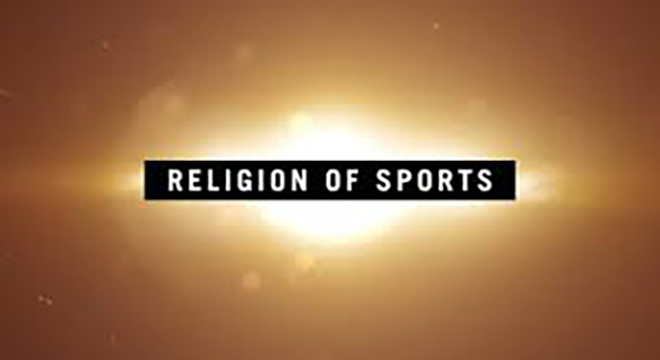

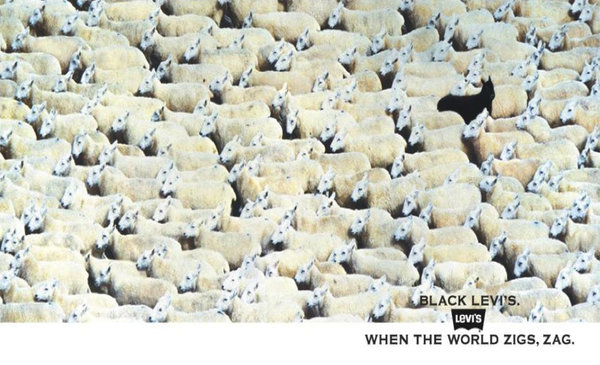





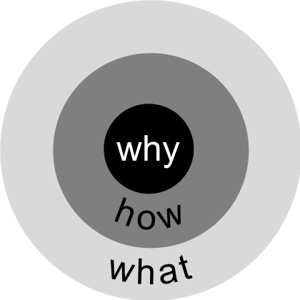 I recently shared my thoughts about applying Simon Sinek’s “Start With Why” concept (also known as The Golden Circle) to the sales process - you can
I recently shared my thoughts about applying Simon Sinek’s “Start With Why” concept (also known as The Golden Circle) to the sales process - you can 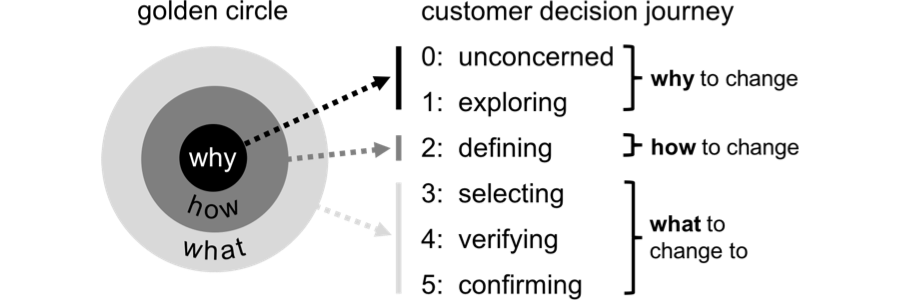
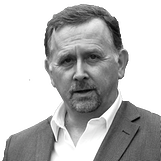 Bob Apollo
Bob Apollo



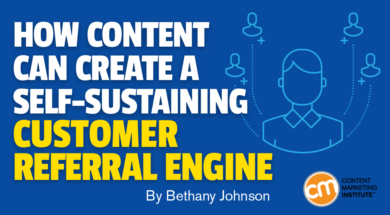




 REDUCE — bring someone or something to a lower or weaker state, condition, or role. In this case to make an objection smaller or less important.
REDUCE — bring someone or something to a lower or weaker state, condition, or role. In this case to make an objection smaller or less important.
![→ Download Now: 12 Resume Templates [Free Download]](https://no-cache.hubspot.com/cta/default/53/4ec95757-585e-40cf-9189-6b3885074e98.png)

